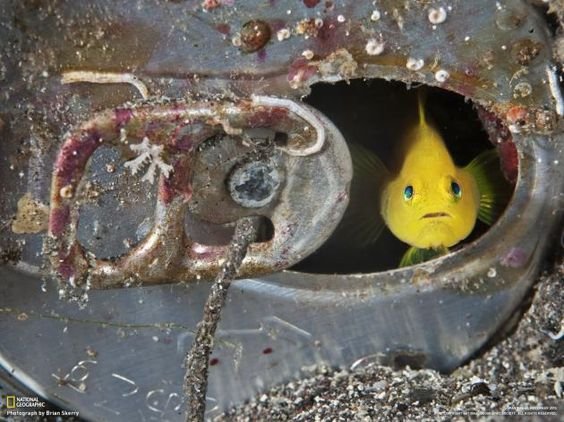ENVIRONMENTAL POLLUTION
Pollution has become a familiar word. But what is it exactly? Pollution is the discharge of substances that adversely affect the environment. Most of the pollution is the result of human activities. The collection and use of the natural resources on which we depend produce pollution.

THE POLLUTION FOOTPRINT
To better understand the contamination process, consider a soda can. To obtain the aluminum, it exploits the grain that contains the aluminum, leaving scars on the ground. Later, the chemicals are used to extract the aluminum from the mineral. The rest of the chemicals are washed with water, which can end up in a river or stream.
Now, purified aluminum is sent to the manufacturing plants to make the can. It takes energy to do it, a fuel like coal or oil, which burns to produce energy. As a result of the burning of fuel, smoke, soot and gases are released and pollute the air.
Finally, the soda can can be transported to a supermarket by a truck, which burns gasoline and pollutes the air, but does not end there, then the soda ends up in the hands of the consumer, who drinks soda and carelessly throws the Vacio Can in the sewer by the road. It has become garbage! This garbage is not an offense to the eye, it is a danger to wildlife, and can poison our soil and water resources.

SOURCE AND SOLUTIONS
As the soda can shows, pollution can be considered as the damage done to a resource by the use of another resource. Although not all can be attributed to the use of energy resources, the majority is due to the use of energy.
Our dependence on fossil fuels (coal, oil and natural gas) has made pollution the biggest concern of recent decades. The collection and use of fossil fuels has led to a series of pollution of land, air and water.

There are no easy answers. But there are ways to avoid pollution. Maintaining the balance of the environment does not mean that we must abandon all the activities that threaten it. The solution may include new ways to regulate and reuse materials so that they become new resources.

Activities:
You and Your World: Have you seen any pollution problems in your neighborhood? If so, is it garbage, smog, polluted water or some other type of pollution? In your notebook, draw an image of the type of pollution you have observed, describe and record what needs to be done to avoid it.
Garbage Hunters: How much garbage do you throw per week? To find out, try to carry a trash bag with you for a week. Instead of throwing imperishable objects like cans, bottles or newspapers, put them in the bag. At the end of the week, you may be surprised by everything you have accumulated!
Is there a way to reduce the amount of garbage you throw?
Printing activities:
1. Cómo se hace una lata de Aluminio
2. Coloring an online environment
In the next post, we will look more closely at three types of pollution: soil, air and water, and ways people can avoid.
Downvoting a post can decrease pending rewards and make it less visible. Common reasons:
Submit
Hi @steemiteducacion, thank you for your support and for encouraging more teachers to write.
Downvoting a post can decrease pending rewards and make it less visible. Common reasons:
Submit
Hi friend, pollution is so difficult to finish, but if we all put our granitode sand we can help reduce in large quantity the various factors that make us in that black cloud that affects the environment.
I really liked his writing because many believe that everything we throw to the bin is garbage and can serve as a recycling for different things to use.
Greetings.
Downvoting a post can decrease pending rewards and make it less visible. Common reasons:
Submit